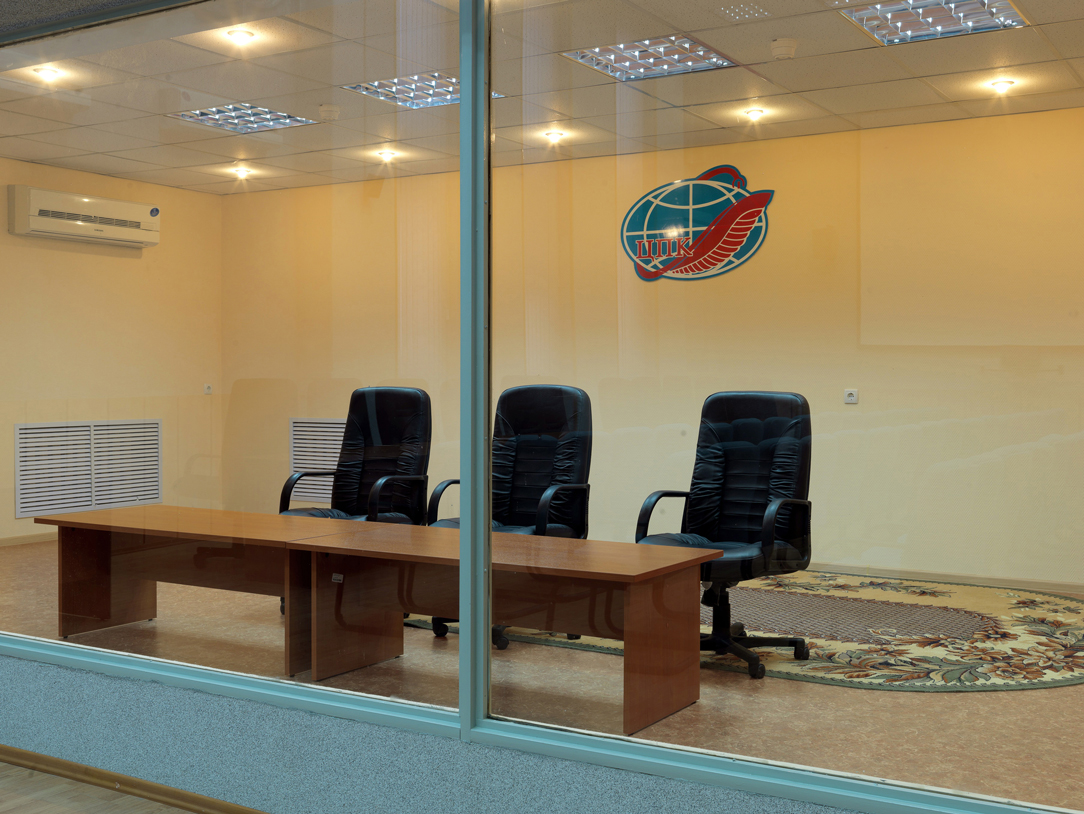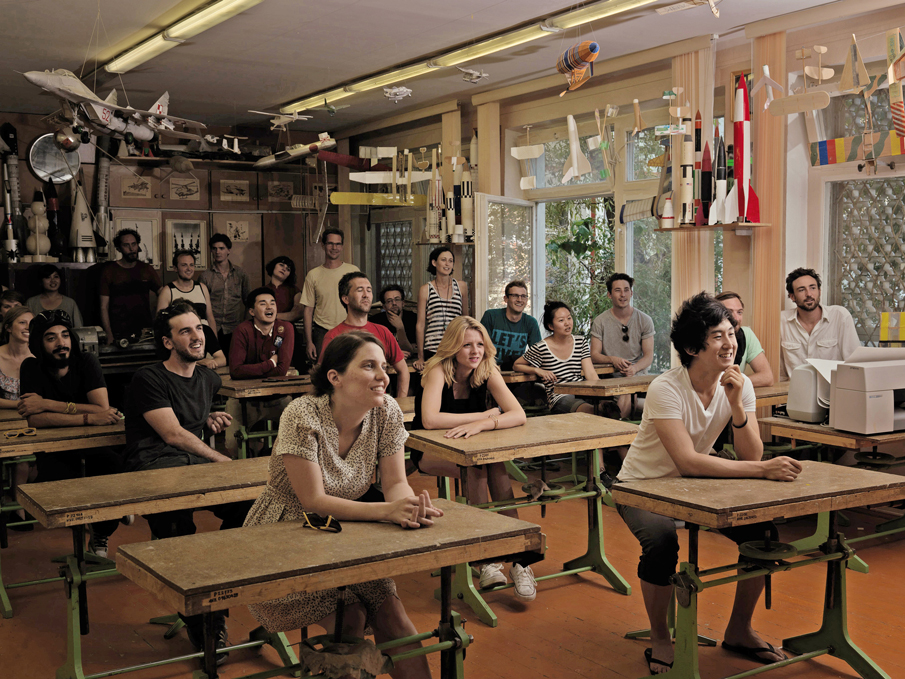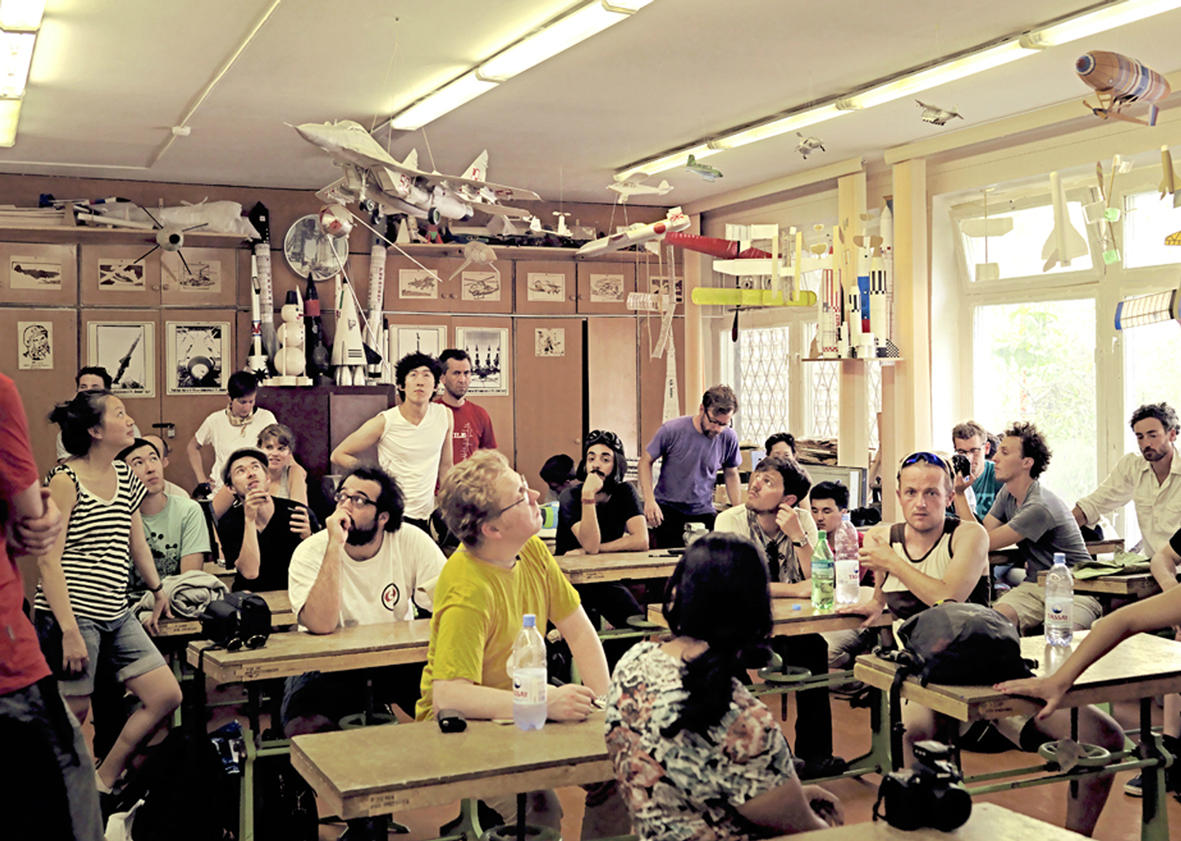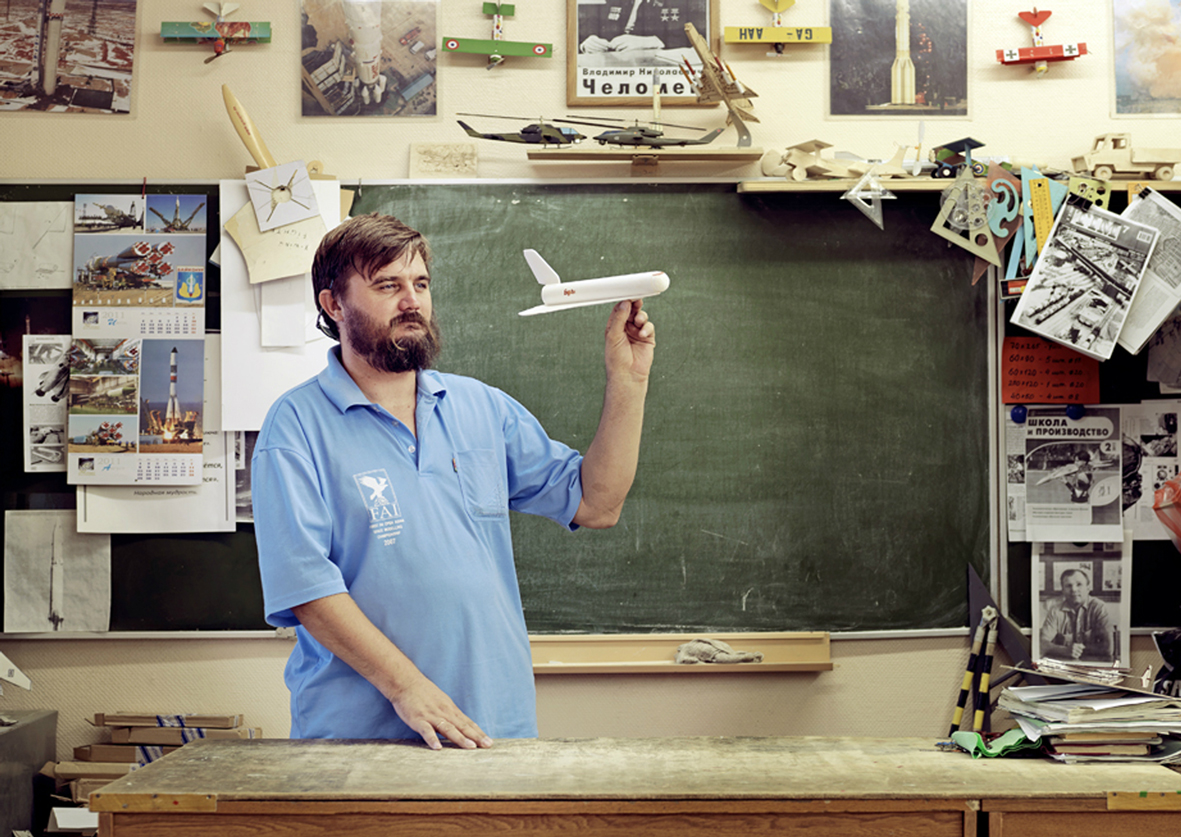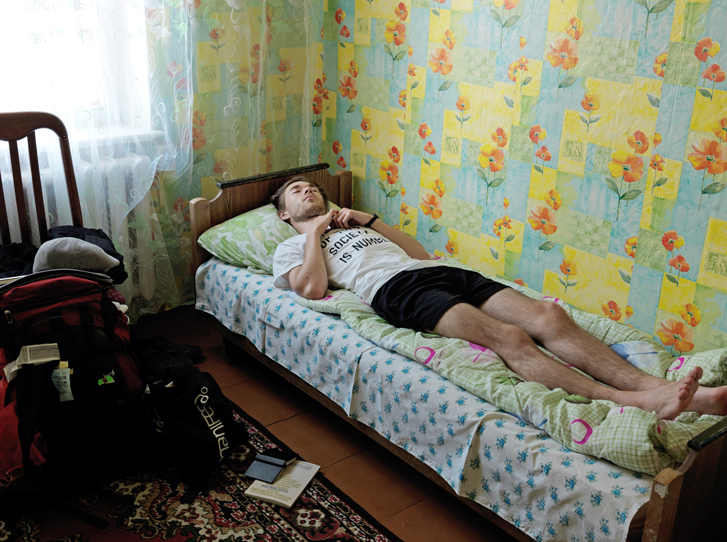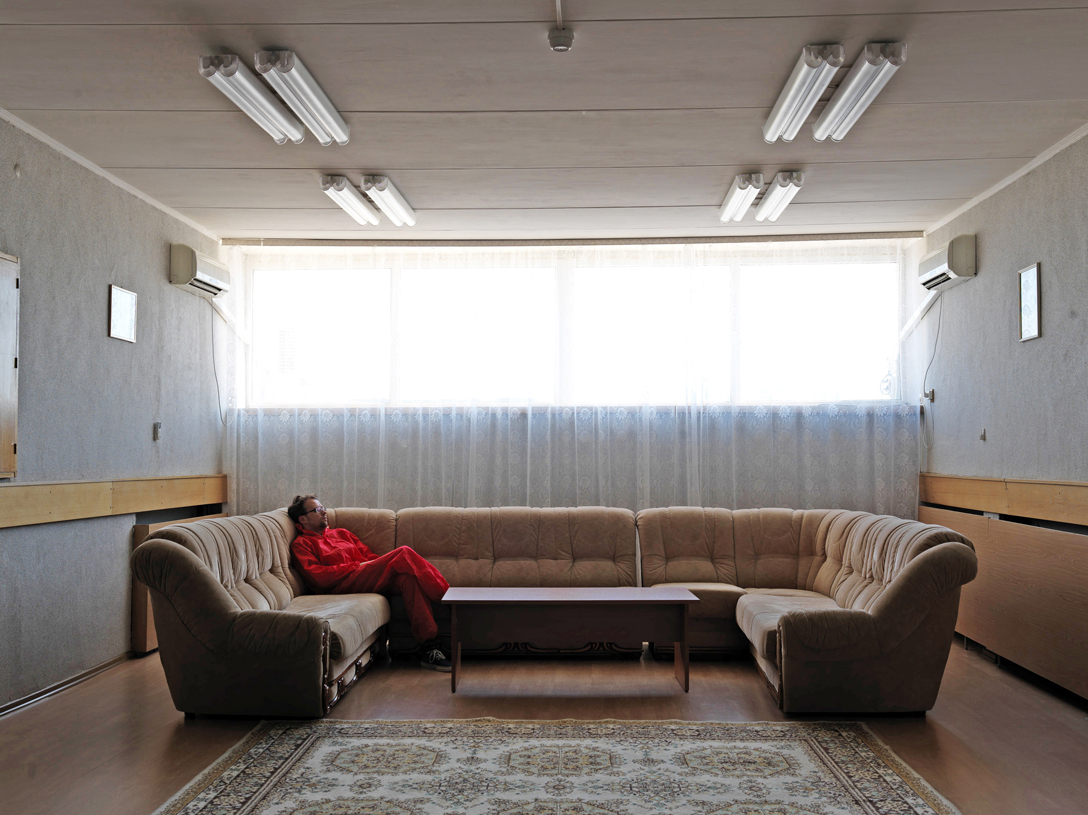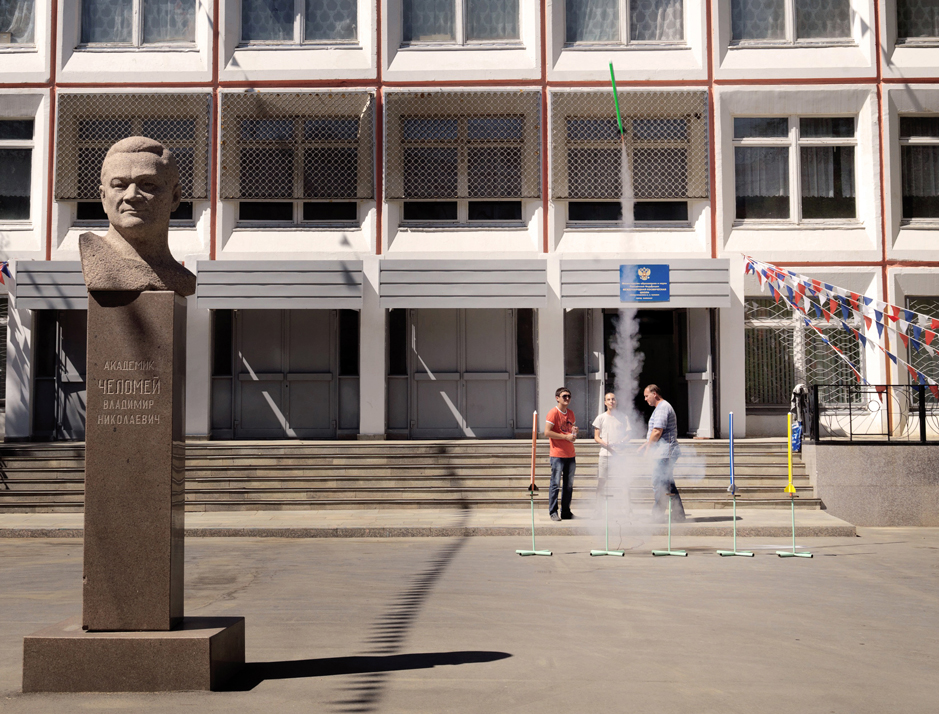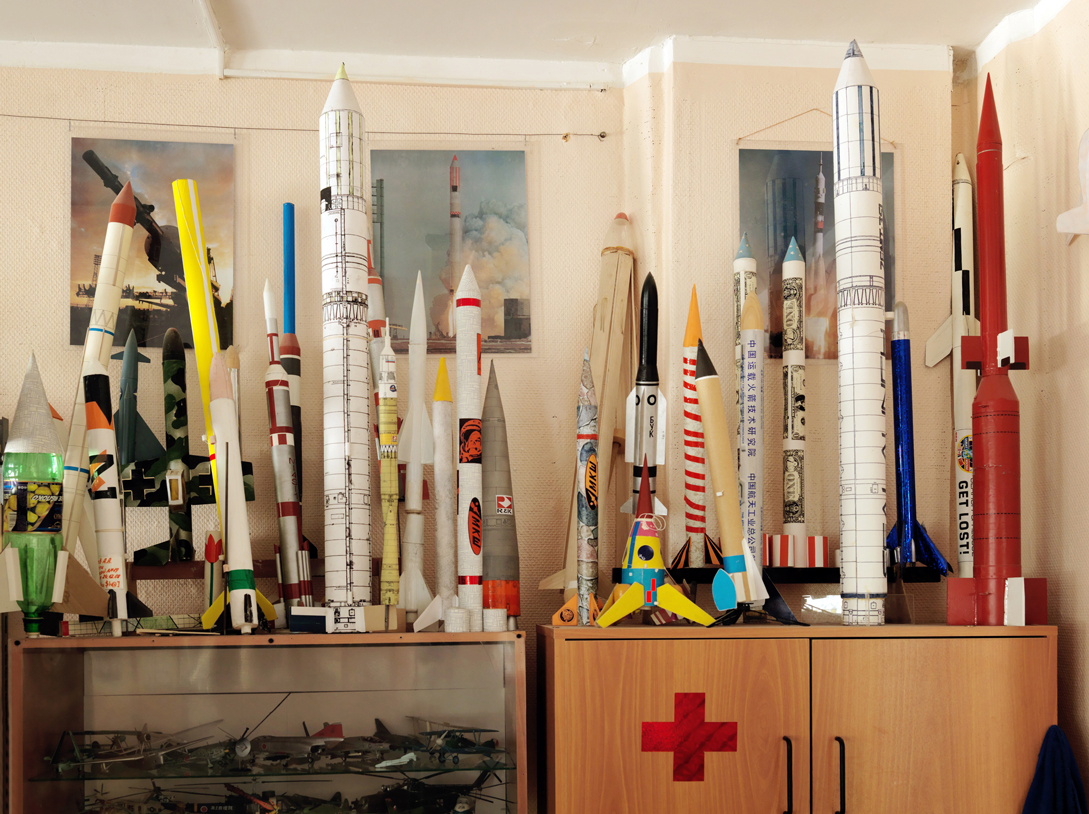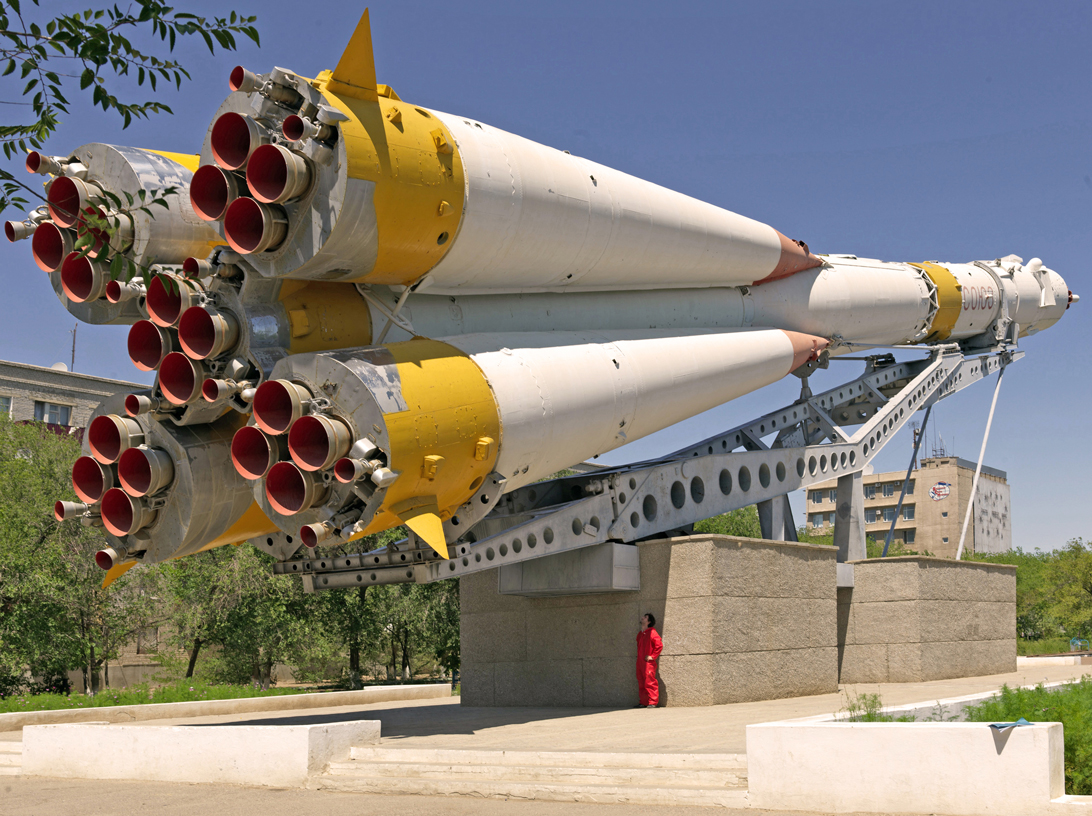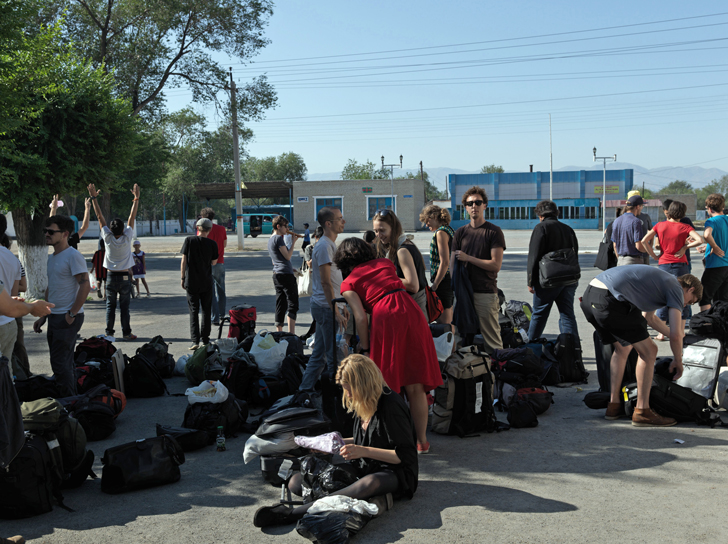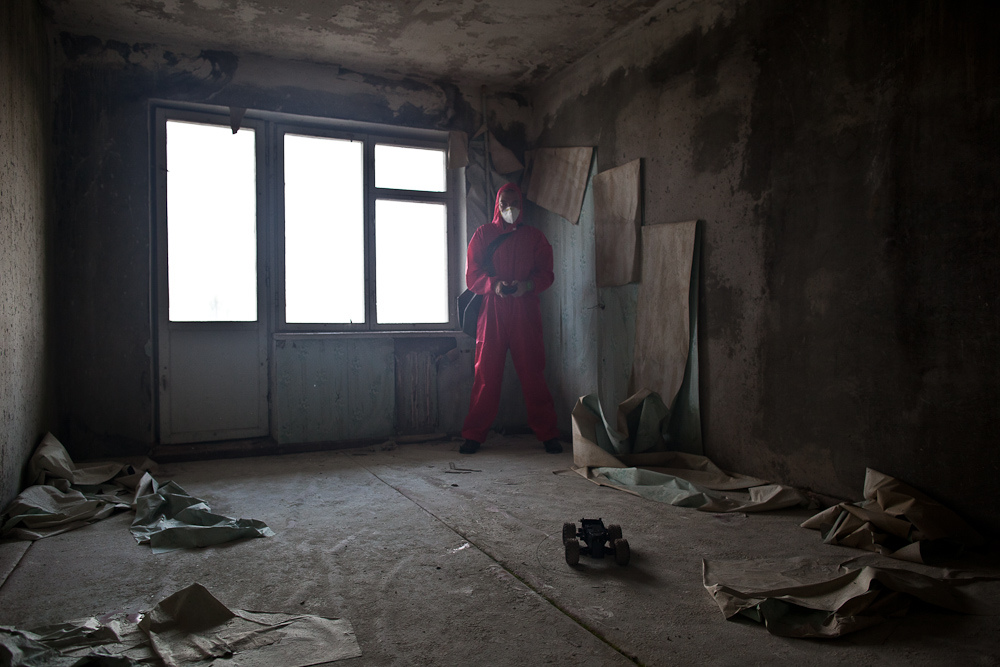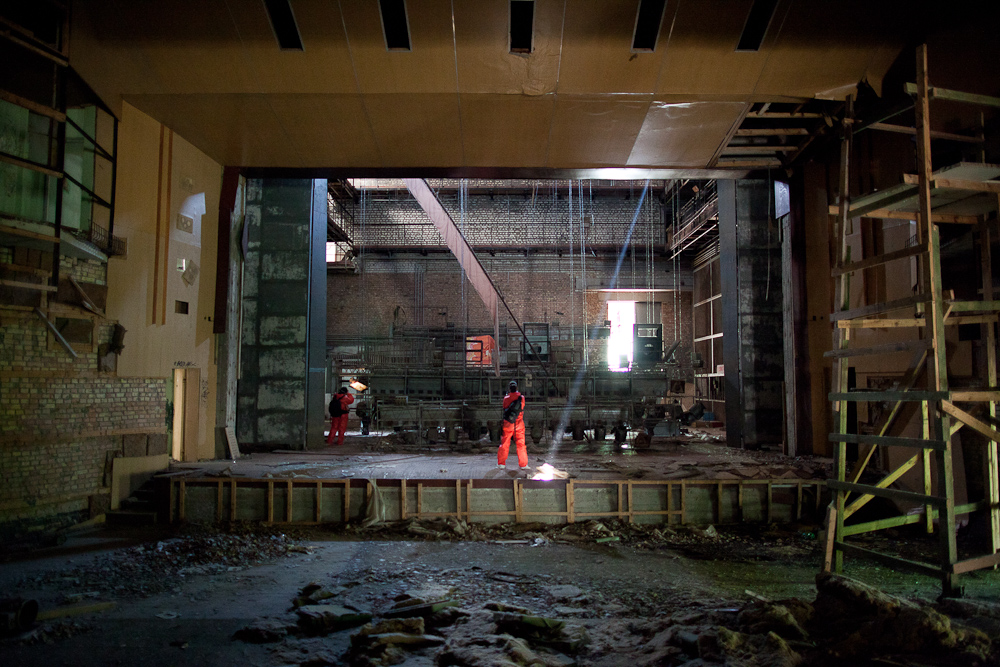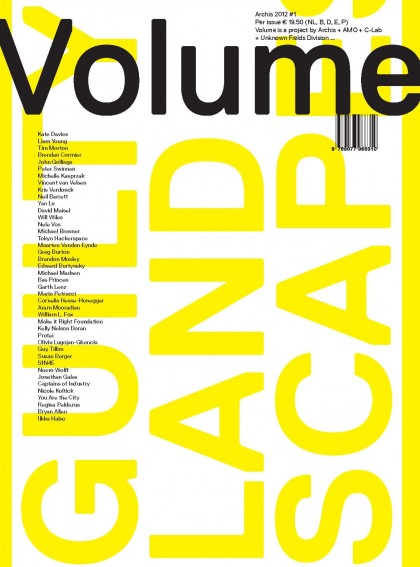SUMMER 2011_ATOMIC TO COSMIC
_CHERNOBYL EXCLUSION ZONE TO BAIKONUR COSMODROME
Projects
- Ground Control: An Opera in Space from Unknown Fields Chernobyl to Baikonur cosmodrome expedition collaborator Nelly Ben Hayoun
- Guilty Landscapes: Volume issue #31 co edited by Unknown Fields
- GAMMA: Factory Fifteen collaborate with Unknown Fields to produce ‘GAMMA’, filmed on location in Chernobyl
- Space Cadets: Vincent Fournier embedded photographer for Unknown Fields Baikonur Cosmodrome Expedition
"After Sputnik there is no nature, only art." Marshall McLuhan
Unknown Fields is a nomadic studio that will set off on an annual expedition to the ends of the earth exploring forgotten landscapes, alien terrains and obsolete ecologies. Each year we will navigate a different global cross-section and map the complex and contradictory realities of the present as a site of strange and extraordinary futures. You will be both visionaries and reporters as the sites we encounter will afford us a distanced viewpoint from which to survey the consequences of emerging environmental and technological scenarios.
This year, on the 50th anniversary of Yuri Gagarin’s first manned space flight, we will pack our Geiger counters and spacesuits as we chart a course from the atomic to the cosmic to investigate the unknown fields between the exclusion zone of the Chernobyl Nuclear Reactor in the Ukraine and Gagarin’s launchpad at the Baikonur Cosmodrome in Kazakhstan. Beginning in the shadows of nuclear disaster we will survey the irradiated wilderness and bear witness to a sobering apocalyptic vision. We will skirt the retreating tide of the Aral Sea and mine the ‘black gold’ in the Caspian oilfields and caviar factories. We will wander through the cotton fields of Kazakhstan and tread the ancient silk road before reaching the shores of the cosmic ocean bathed in the white light of satellites blasting into tomorrow’s sky. In these shifting fields of nature and artifice we will re-examine our preservationist and conservationist attitudes toward the natural world and document a cross-section through a haunting landscape of the ecologically fragile and the technologically obsolete.
Joining us will be collaborators from the worlds of technology, science and fiction including the Phillips Technologies Design Probes research Lab and Archis/Volume magazine. Together we will form a travelling circus of research visits, field reportage, rolling discussions and impromptu tutorials. Throughout our journey The Unknown Fields Division will identify opportunities for tactical intervention and speculative invention that will be chronicled in a publication and touring exhibition. Together we will examine the never-never lands between cultivation and nature and spin cautionary tales of a new kind of wilderness.
<
‘To be the first to enter the cosmos, to engage, single-handed, in an unprecedented duel with nature-could one dream of anything more.’ Yuri Gagarin
Summer 11 Division Roster
Leaders: Liam Young and Kate Davies
Special Forces: Filmakers Michael Madsen and Jonathan Gales, writer Will Wiles, experience designer Nelly Ben Hayoun, Philips Design Probes, space human factors designer Regina Pledszus, photographer Vincent Fournier.
![]()
Ground Control: An Opera in Space from Unknown Fields Chernobyl to Baikonur cosmodrome expedition collaborator Nelly Ben Hayoun
Unknown Fields Speculative Theatre Group_Summer 2011_Chernobyl Exclusion Zone 51°22’52.7″N 30°06’59.5″E
Artist Nelly Ben Hayoun was invited along for our Summer 2011 expedition form the Chernobyl Exculsion Zone to Baikonur Cosmodrome. Nelly's infatuation with control rooms, from the Chernobyl reactor to Baikonur Mission Control continues to evolve following a recent intensive residency at the NASA Ames Research Center in California. During her period in residence Nelly assembled the International Space Orchestra, an experiential and hybrid research laboratory, where space scientists have been invited to implement, deconstruct, perform, sing, mix, modify, and design musical acts in control rooms. The Space Orchestra has been performing Ground Control: An Opera in Space in various incarnations around the world as the project continues to grow and grow into ever more ambitious constellations. Directed by NELLY BEN HAYOUN, featuring music written by Blur and Gorillaz frontman DAMON ALBARN with BOBBY WOMACK; MAYWA DENKI andPENGUIN CAFE‘s ARTHUR JEFFES. With lyrics by BRUCE STERLING &JASMINA TESANOVIC. Musical director: Two time Grammy-Award winner EVAN PRICE.
![]()
Guilty Landscapes: Volume issue #31 co edited by Unknown Fields
Unknown Fields Publications_Summer 2011_Chernobyl to Baikonur Cosmodrome 51°22’52.7″N 30°06’59.5″E
As part of an ongoing collaboration with Archis + Volume and the Unknown Fields Division have co authored VOLUME 31: Guilty Landscapes. VOLUME joined Unknown Fields on ther Summer 2011 expedition form the chernobyl Exclusion Zone to Baikonur Cosmodrome and this research, developed alongside Unknown Fields previous missions to dislocated hinterlands around the world have informed the issues theme. Guilt has been effectively used to control and manipulate the masses. But it can also be the start of a change for the better: awareness, concern, action. Engagement and guilt are never far apart. Engagement is sublimated guilt. We can build on guilt, but can we build with guilt? Is guilt a material to design with? You can see the table of contents or check out a sneak preview of the issue.
In three sections: revelations, confessions, and atonement, the issue presents a global scan of large-scale guilty landscapes and our design relation to them. A major section is dedicated to the Chernobyl ‘exclusion zone’ as a post nuclear disaster area, with other contributions focusing on landscapes transformed by mining industries, waste, human atrocities and more, as well as ways to atone for these criminal acts.
![]()
GAMMA: Factory Fifteen collaborate with Unknown Fields to produce ‘GAMMA’, filmed on location in Chernobyl
Unknown Fields Embedded Film Unit_Summer 2011_Chernobyl Exclusion Zone 51°24’19.0″N 30°03’18.0″E
Unknown Field's Division collaborators Factory Fifteen have just released their short film GAMMA, shot on location during our 2011 expedition from the Chernobyl Exculusion Zone to Baikonur Cosmodrome. The landscapes experienced with the division have been reimagined as stage sets for a post nuclear future and members of the division are recast as actors navigating the ruins.
From the GAMMA press release,
"In a post-nuclear future, when the earth is riddled with radiation, a new urban developer proposes to regenerate the cities back into civilisation. GAMMA sets out to stabilise the atomic mistakes of yesteryear for the re-inhabitation of future generations. Using its patented ‘Nuke-Root’ technology; part fungi, part mollusc, GAMMA intends to soak up the radiation and remove it from the irradiated cities, rebuilding them in the process.
Setting out from Baikonur, Kazakhstan, GAMMA launches its RIG_01 BETA and heads east to the iconic disaster sites of 1980’s USSR. The film follows a group of researchers investigating GAMMA’s practice from launch to deployment. Moving through a trail of unsuccessful ships across the desert, we follow the researchers from Aralsk’s littered sea bed east to the Ukraine.
GAMMA begins its quest of nuclear stability in the Ukraine; Pripyat is used as a test bed for the deployment of GAMMA’s patented ‘Nuke-root’ organisms. Intended to soak up the radiation, the roots infiltrate the ground and built structures to absorb the ‘nuclear nasty’s’. As with many urban developers, GAMMA’s execution is cheap and ineffective. The city is in turn rendered more radioactive, broken and uninhabitable than before, only now with an outbreak of growing ‘Nukeroots’. The film follows the researchers through the ruins of the 70’s utopia, moving across a whole city that consists solely of desolation and total abandon, the researchers witness the aftermath of GAMMA’s almighty cock-up.
GAMMA was filmed in the Ukraine and Kazakhstan in association with the Unknown Fields Division.
The Factory has also posted some of the behind the scenes footage that you can watch below.
![]()
Space Cadets: Vincent Fournier embedded photographer for Unknown Fields Baikonur Cosmodrome Expedition
Unknown Fields Embedded Photography_Summer 2011_Baikonur Cosmodrome 45°51’34.8″N 63°18’48.1″E
Photographer Vincent Fournier was invited to join Unknown Fields for the Baikonur Cosmodrome leg of our 'From the Atomic to the Cosmic' Expedition. Vincent recorded the journey and developed images for his ongoing Space Project work. The collaboration was published in the January 2012 issue of WIRED. Words by another Unknown Fields collaborator space designer Regina Peldszus of Spaceflightdesign. All images are copyright Vincent Fournier.
This is where rocket jockeys get their education. The International Space School VN Chelomey is located in the Russian-administered city of Baikonur, in the southern province of Kyzylorda in Kazakhstan. Founded by the Russian Ministry of Education and Science in 1990, this state school caters to 750 students from the age of ten to 15. Baikonur is also home to Baikonur Cosmodrome, the world's largest spaceport, built by the Soviet Union in 1955 and operated today by the Russian Federal Space Agency. The Cosmodrome is also the only spaceport to send crewed missions to theInternational Space Station.
Aerospace Classroom: The aerospace lecture room is plastered with blueprints of propulsion systems and stacked to the ceiling with cardboard templates of aerodynamic hulls, plastic mockups of spacecrafts, and prototypes. “The students learn the principles of rocket science by designing and launching models,” says aerospace teacher Victor Mazepa, 38. The models are made with composite materials and include an engine and a parachute that allows them to be launched and reused.
Today's lesson: build a shuttle- “This is a model of the Buran shuttle [an orbital shuttle like Nasa’s Space Shuttle],” says Mazepa. “My ten-year old students build these.” Mazepa also coaches his class during rocket modelling contests.
Semyorka R-7 Monument- One of Baikonur’s main avenues is home to a full-scale mock- up of the Semyorka R-7. The 34-metre, 280-tonne missile was made by the Soviets during the cold war and was the world’s first intercontinental missile system.
In the museum- These models in the aerospace lecture room are built by the students. They include a replica of the Buk anti-aircraft missile, and a rocket model made from a plastic bottle, launched using water and pressurised gas.
Live playground experiments- In the yard stands a bust of Vladimir Chelomey. Chelomey was a mastermind of the Soviet spaceflight programme during the 60s; he designed satellites and the Proton space rocket, still in use today.
Baikonur Cosmodrome Launch Press Conference Room
Cosmonaut hotel, relaxing before launch.
Cosmonaut hotel room
The Unknown Fields Division boarding the 60 hour train across Kazakhstan to Baikonur.
